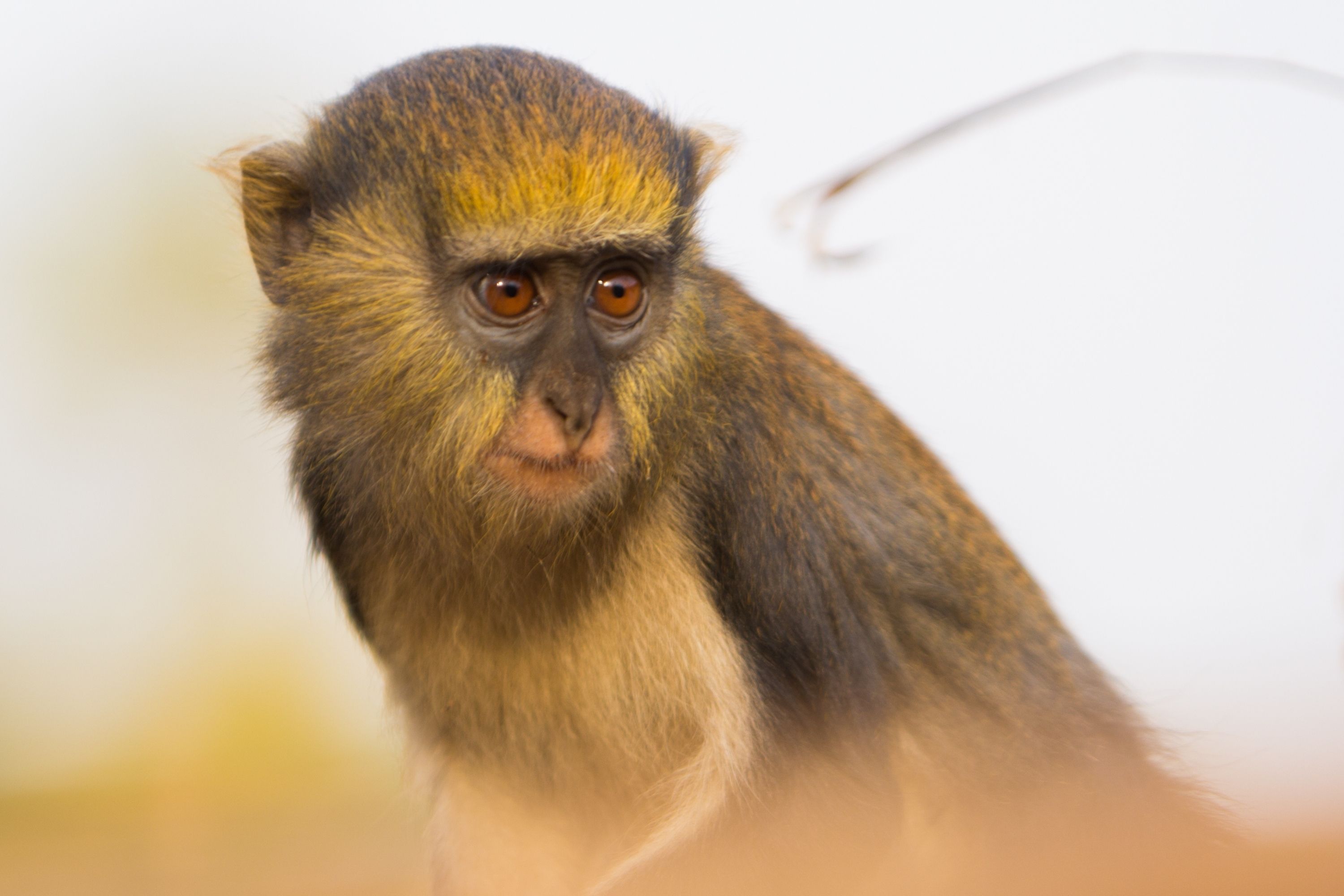Crested mona monkey
(Cercopithecus pogonias)

Description
The crested mona monkey, also known as the crowned guenon, crowned monkey, golden-bellied guenon, or golden-bellied monkey, (Cercopithecus pogonias), is a species of African primate in the family Cercopithecidae found in west central Africa. The crested mona monkey is a medium-sized, long tailed arboreal monkey with the females being smaller than the males but showing similar colouration and pattern of coat. They have a brown coat speckled with grey which becomes black on its lower arms and legs and on the base of its long tail. The rump, belly and the insides of the legs are golden-yellow contrasting with the rest of the fur. The males have a distinctive blue scrotum. Their faces are mainly dark blue with a pink muzzle. Around the face the fur is yellow marked with a wide black stripes which runs from the beside the eyes over to the temples and across the centre of the forehead where it forms the characteristic small crest which gives this species its common name. Western central Africa from the Cross River in Nigeria and southern Cameroon south to Cabinda, Angola, including Bioko Island, and east into the Central African Republic, eastern Congo and the northern Democratic Republic of Congo. The Crested mona monkey occurs in mature lowland rainforest, in both primary and secondary forest, where there is a well developed canopy and with a clear understorey. Will also occur in flooded forest but avoids small forest patches, gallery forests and open secondary forest with a dense understorey. The crested mona monkey is a highly vocal species with a wide repertoire of calls. Both males and females have vocal sacs which are inflated to be used as resonators. A typical call is the booming call made by the adult male which can be heard more than 200m away. Social interactions include tail twining between resting monkeys and a ritualised head display. The crested mona monkey is an agile species, which crosses large gaps between trees by jumping. They are normally found in groups of between 8 and 20 individuals which are typically made up of a single male, several females and their dependent offspring. Groups are highly vocal, with the males producing the loud, "boom" mentioned above announcing their presence and status, there is also a sharp hacking call which is used as an alarm.
Taxonomic tree:







